
|
Today's Calendar |
| | Simply Economics |
| | International Perspective |
| | Resource Center |
 |
|
| 1999 Articles |
|
By Evelina M. Tainer Chief Economist, Econoday Employment falls but wage news less favorable
Fed issues tightening bias, markets rally 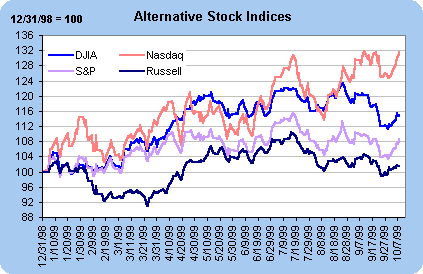 Luckily, other news came to the forefront later in the week that gave equity investors something bullish to grab. Indeed, earnings reports and merger announcements kept the markets hopping through most of the week. Even the soggy employment report didn't phase the stock market. All major indices were higher on Friday - and for the week.
Treasury market (still) worried about (potential) Fed rate hike 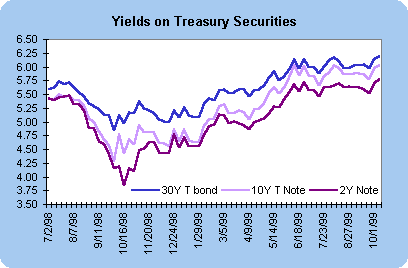
Nonfarm payrolls fall 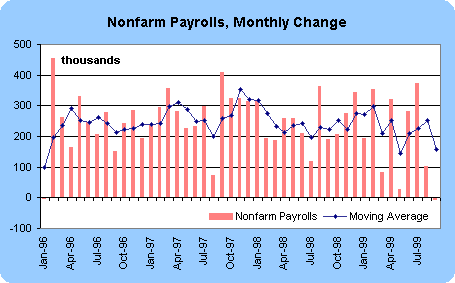 In order to get such a sluggish employment report; the normally-booming service sector must have been hit hard. Indeed, payrolls in the service-producing sector dropped 9,000 for the month. In the goods-producing sector, construction employment increased, just about reversing the previous month's drop. Factory payrolls continue to bleed. It now appears that the 53,000 gain posted in July was an aberration. The weakness in manufacturing employment is at odds with the improvement in manufacturing activity - such as new orders. Factory orders are now 8 percent above year ago levels, but payrolls are down 2.1 percent from last September. 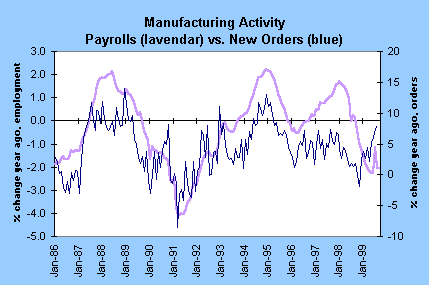 The bottom-line on payrolls? It is unusual to see such a sharp deterioration in employment when demand is still healthy. For instance, chain store sales posted robust gains on the whole in September suggesting that the consumer-spending spree isn't over. The two-month moderation in payrolls could be reflecting the high degree of tight labor markets. It is possible that employers simply can't find qualified workers. This would mean that growth is limited by supply shortages, rather than a drop in demand. After all, the civilian unemployment rate remained unchanged in September at 4.2 percent with modest gains in both employment and the labor force. If the labor market were softening, we would see an uptick in the jobless rate. 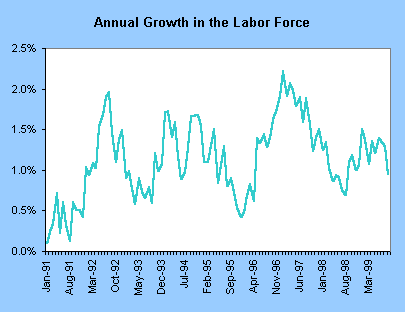 Alan Greenspan and other Fed officials have long worried about the rate of labor force growth. Note the rapid decline (in the rate of growth) in the past couple of months. If the labor force doesn't increase adequately, and productivity gains moderate significantly, upward pressure on wages could become a greater concern (than they are now).
Is the wage acceleration a real concern? 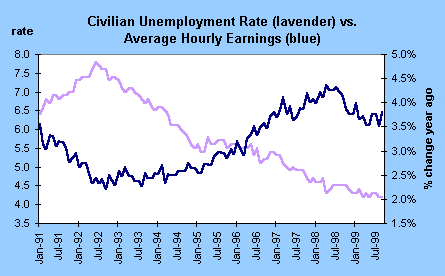 The bottom-line on wages? Since mid-1998, average hourly earnings have fluctuated between 3.5 and 4 percent on a year-over-year basis. Fed officials were not entirely worried about these annual wage gains because they were offset by healthy productivity gains. The difference between now and then is that the Fed is not so sure that productivity will continue to rise at the same heady pace of the past couple of years. When wage increases are offset by productivity increases, then companies don't need to raise their prices for the goods or services they are selling. As world demand picks up steam after two soggy years, Fed officials worry that the U.S. won't find the same competitive pressures curtailing prices as in the past couple of years. After all is said and done, though, it is too early to view the September rise in wages as the big bad wolf of inflation.
Auto sales weaken but chain store sales healthy 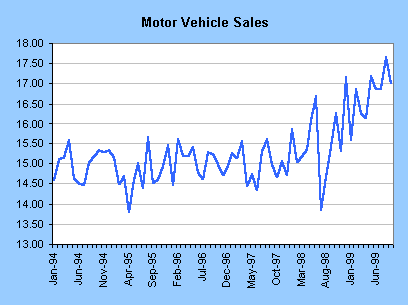 Chain stores reported monthly sales results this week with mostly favorable results from a year ago. The data suggest that retail sales could be robust in September. The sales reports were somewhat surprising, however, in light of the weekly chain store sales from the LJR Redbook and the BTM/Schroders series. These have shown marked declines over the summer months. It will be interesting to see how these figures translate into retail sales (reported next week).
THE BOTTOM LINE The employment report was negative for the bond market because the focus on wages was stronger than the interest in the downdraft in employment. Hurricane Floyd affected the data and made it more difficult for market players to interpret the report. It really is too soon to determine whether the Fed will raise rates at the next FOMC meeting. Today's news makes it a toss-up. But never fear - the Fed and market players will have several more economic indicators to help them determine the direction of the economy and inflation.
Looking Ahead: Week of October 11 to 15
Thursday Economists are predicting that retail sales will edge up 0.2 percent in September after gaining 1.2 percent in August. Motor vehicle sales dropped during the month and will put downward pressure on the total. Excluding autos, sales are expected to rise 0.4 percent for the month, in line with the past couple of months.
Friday Business inventories are expected to rise 0.2 percent in August, higher than the previous two months. However, sales are expected to jump 1.4 percent and this will keep down the inventory to sales ratio. The consensus forecast for the index of industrial production is up 0.1 percent after a modest 0.3 percent gain in August. Several manufacturing indicators including the NAPM point to a pickup, but soggy employment will curtail the gain. At the same time, the capacity utilization rate should decrease to 80.7 percent from 80.8 percent in August. |
|||||||||||||||||||||||||||||||||||||||||||||||||||||||||||||||||||||||||||||||||||||||||||